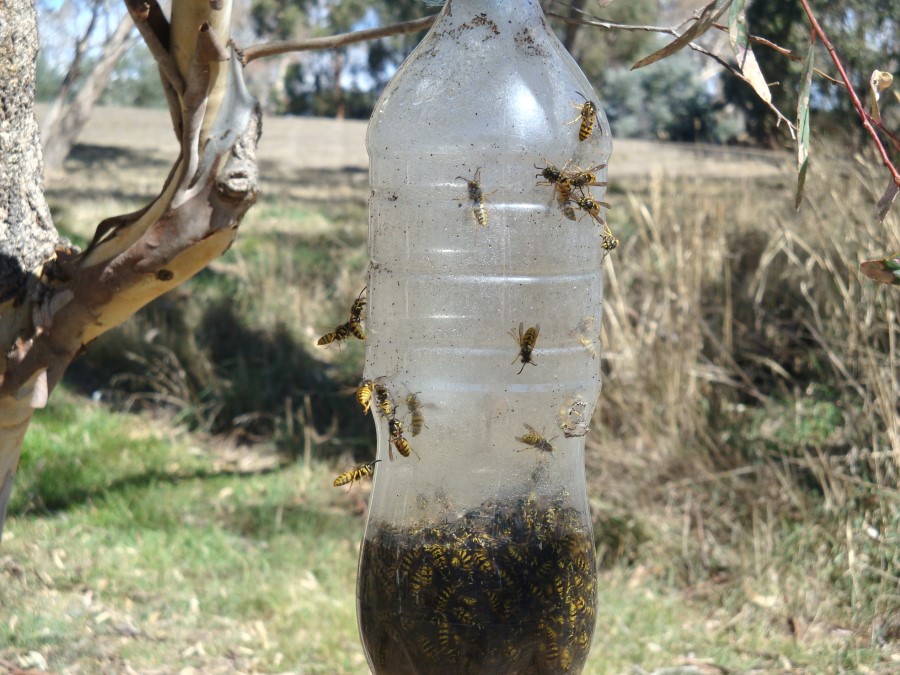Laurie Nicoll does not claim to be a scientist or entomologist but he does have a proven technique to help with European wasp control using everyday goods from the pantry. He is now sharing his technique to help others but says the trick is take action early in spring. Here’s his story…
I live in central Victoria on two acres of bushland and have been studying the habits of the European wasp for more than 15 years.
I believe all methods tried so far to get rid of European wasps, i.e. baiting with poison, to take back to nest, the parasitic wasp (1997 trial) to eat lava, have failed.
I have also tried other methods when nests have formed but so far none have worked apart from finding and dusting them.
I believe the main component in the cycle is the queen, which is overlooked. It seems that waiting for nests to be formed then taking action is what’s in everyone’s mind.
I have developed a method to catch the queen before she makes a nest. My idea is cheap, environmentally friendly, recyclable and safe, easy to make and most households will have ingredients for bait.
For this idea to work it needs people power: if every household put out five traps the number of nests formed would be reduced greatly.
As most nests die off during winter, people become complacent because there are no wasps around until it’s too late. My idea starts in spring.
The queen comes out of hibernation in spring with two priorities in mind: the first is to build a nest and the second is to feed herself, which is mostly carbohydrates, until she has workers take over.
My method uses five 1.25lt soft drink bottle with three holes about 10mm in diameter, about 150mm from bottom of bottle and a bait made from eight tablespoons honey, dissolved in two cups hot water, plus two teaspoons pure vanilla essence, 35 per cent alcohol (Queen red label).
Divide between five traps, top-up with water to just below holes, replace cap and hang about 2m off the ground.
The traps need a little tending until January, meaning when checking traps, give a shake to let a little lure dribble out.
When full, strain catch (I use a kitchen colander), reuse bait and top up with water. This can be done three to four times before the lure may need replacing.
When traps stop catching replace with fresh lure.
In 2015 season catch was 1360! And in 2016 it was 258!
I left traps out over 2016 wasp season January to May and caught about 6000+ workers.
I had no wasp problems eating outside, barbecues, etc., my method may also keep wasps from attacking beehives, grape vines and other fruit that may be affected, but this is only a thought and has not been field-tested.
And finally I am not intending to gain financially from this idea, it’s free to anyone who wants to try.








